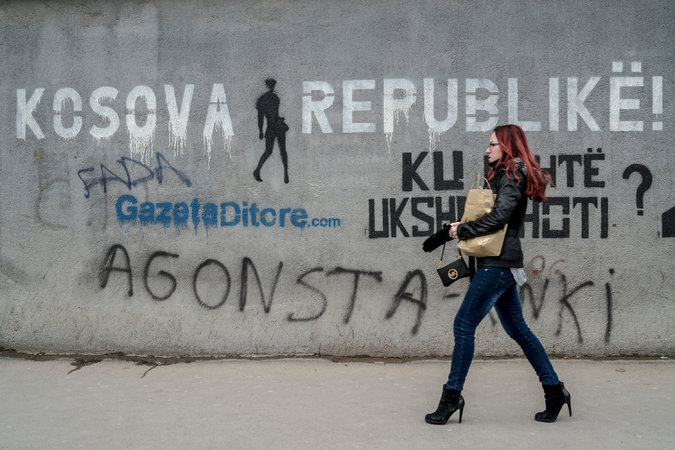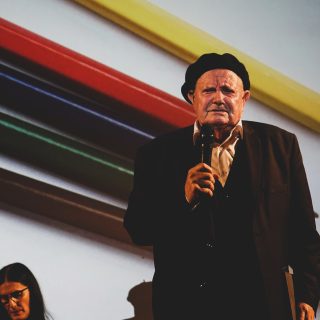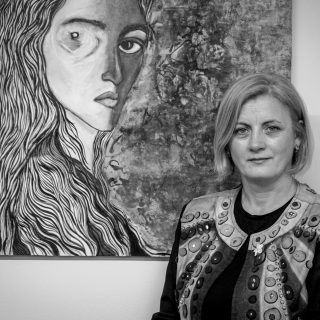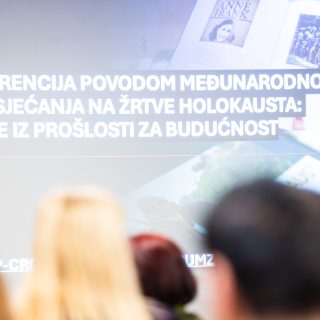
Ethnic Albanians load a tractor with looted goods, taken from former Serb homes, in Peja, Kosovo. June 25, 1999. Credit Tyler Hicks/The New York Times
Times Insider delivers behind-the-scenes insights into how news, features and opinion come together at The New York Times. In this article, Carlotta Gall, a reporter in Pakistan and Afghanistan, shares the personal back story to her recent news analysis of how Kosovo has changed since she set eyes on it in 1999.
It was strange and moving to return to Kosovo for the first time in 15 years.
I had lived and worked there for three years, from 1999 to 2001 — the most tumultuous time in its recent history, when America led NATO into war against Serbia to stop its violent oppression of the Kosovo Albanian population.

A young ethnic Albanian refugee stands close to his mother as they and others flee shelling by the Yugoslav army of their village, Trstenik, on the road to Drenas in Kosovo. March 22, 1999. Credit Tyler Hicks/The New York Times
I moved on in 2001 to report on the war in Afghanistan, and now I live and work in North Africa. This is the life of a foreign correspondent. But you never quite leave a country behind.
I had watched the news from afar when violence spiked, and when Kosovo finally won its independence in 2008. And like all journalists, when I met up with friends and colleagues who worked there, we swapped stories and discussed the latest events.
Advertisement
Continue reading the main story
So I knew that, along with much of Europe, Kosovo had shown signs of Islamic radicalization. Young Kosovars had been running off to join the Islamic State in Syria; friends told me that radical mosques and preachers had become prominent, and religious vigilantes were threatening people.
I had long followed violent Islamist movements — from Afghanistan to former Soviet Central Asia, the Caucasus and North Africa — but I was stunned to hear that Kosovo, which had long been a United Nations protectorate, had been infected, too.

Shemsi Maliqi (right) with one of his sons and his family, Gjilan, Kosovo, March 28, 2016. Another of his sons, Alejhim Maliqi, is believed to be with ISIS in Syria, and Kosovo police have issued an indictment for his arrest. Credit Andrew Testa for The New York Times
My editors gave the go ahead for me to make a reporting trip. The project would fit into a larger investigative series we were developing.
I began pulling together contacts. Two friends who had worked with me during the war — British photographer Andrew Testa and Kosovar translator and researcher Laura Kajtazi — still visited Kosovo regularly and filled me in on much that I had missed.
I arrived in Kosovo in time to attend a two-day security conference in the capital, Pristina, which helped me catch up on regional events.
It was eerie being back. Some landmarks were unchanged, such as the gray, communist-era Grand Hotel, where we foreign journalists had been corralled and then expelled by Serbian paramilitaries on the first day of the NATO bombing.

A woman walks past pro-Kosovo independence graffiti in downtown Pristina. February 12, 2016. Credit Andrew Testa for The New York Times
But new buildings made me lose my bearings, and I couldn’t find my old house when I took a first walk around. Our favorite cafe on the main street, where we started every reporting day during the war, was gone.
A whole new generation of young journalists and academics had grown up since I had worked in Kosovo, and I found they had been busy studying the subject of radical Islam for several years. Their body of work was impressive, including a Ph.D. thesis by former refugee Dimal Basha and a report by Shpend Kursani for the Kosovo Center for Security Studies.
Newspaper and TV reporters had tracked Kosovars who had gone to Syria, and had interviewed their families and investigated the radical preachers accused of recruiting them.
Artan Haraqija and Visar Duriqi helped me get started, setting up appointments and translating for me during my interviews. We drove around the country visiting Muslim clerics, local politicians and ordinary townspeople who recounted how radical Islamists had taken over mosques and drawn hordes of young students to their lectures, threatening anyone who got in their way.
Despite sudden flashbacks from the war, it was a joy to rediscover Kosovo: Though roads and buildings had been modernized, the beauty of the hillside villages and snow-capped mountains was unspoiled.
But it was hard to contemplate the new pain afflicting families whose children had been lured into Syria, almost always without the parents’ knowledge. We talked to a few who had come back from Syria, though some denied they had been there, perhaps fearing prosecution (since it is now a criminal offense to join an armed group outside Kosovo).
Kosovars are invariably welcoming and hospitable, and generally regard foreign reporters favorably because we helped expose the atrocities of the war. But some didn’t want to be interviewed — weary as they were of journalists’ questions, or troubled and ashamed by the violent jihadism that’s infiltrated their families.
Several women were outspoken in their criticism of the fundamentalists, but they asked not to be named for fear of retaliation. One had been threatened with death as she walked to work; another complained that her grandfather had struggled to educate his six daughters but her niece had then rejected everything they had achieved and adopted a medieval lifestyle.
After a few weeks I had a good idea of how much Kosovo had changed since the war, but my editors urged me to keep digging. We wanted to uncover the origins of this newfound radicalism.
Over years of reporting on this subject I have found that interviewees tend to be vague about who actually recruited them or their children. People often blame it on the Internet. But experts in the field — security analysts and former militants — say self-radicalization is rare. Recruitment almost always involves peer-to-peer pressure. Someone, whether a person or a group, does the recruiting.
I wanted to answer the question in Kosovo: Who was behind this trend? Who was funding it, how, and why?
I went through hours of videos of radical preachers and ISIS propaganda, and read reams of U.S. diplomatic cables released by WikiLeaks. Some detailed how rich donors in Saudi Arabia and other Gulf Arab countries supported the spread of fundamentalist teachings, and even terrorism, through charitable foundations.
I traveled to Leicester in the United Kingdom to investigate a British Muslim charity that had been accused of radicalizing many families in a village in central Kosovo.
I went back to Kosovo for a second round of interviews, revisiting some of my original sources, and seeking out government officials and investigators in order to pin down facts and figures.
Both the counterterrorism police and the Financial Intelligence Unit tasked with combing through the finances of radical clerics and of charities linked to them were valuable sources of information.
And luck also played a part, as the trial of one of the main ISIS recruiters, Zekirja Qazimi, was going on while I was there.
I left a few weeks later — my notebooks full, my head swirling with information. I drove south to the Blace border crossing, down the same road that we took when we were expelled by the Serbian paramilitaries in 1999.
These were better times. Kosovo had improved immeasurably since those days and was tackling the radicalism. But I felt a familiar burning sensation inside: There was a new story of misery and injustice that needed to be told.
Times Insider delivers behind-the-scenes insights into how daily news, features and opinion pieces come to life at The New York Times. Visit us at: Times Insider. Email us at: timesinsider@nytimes.com.





